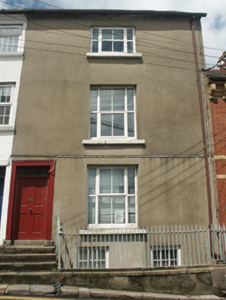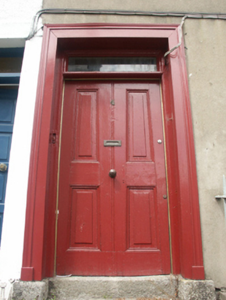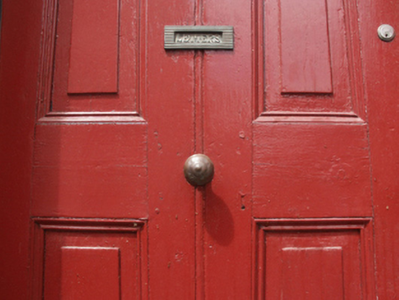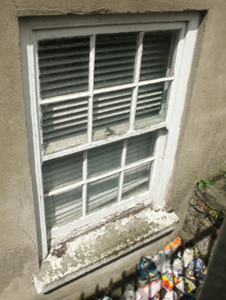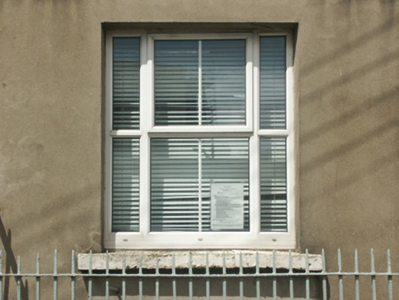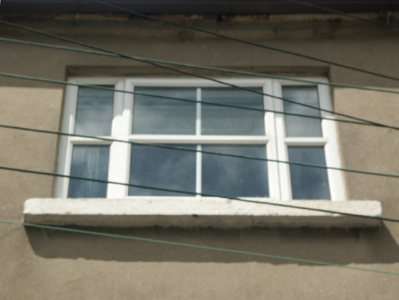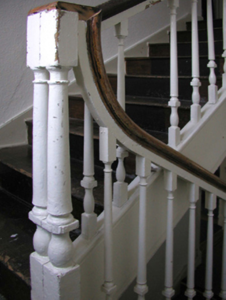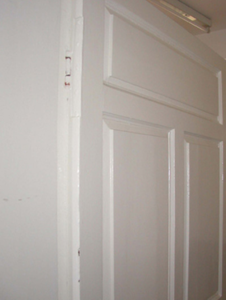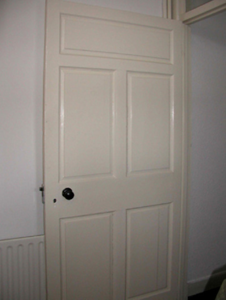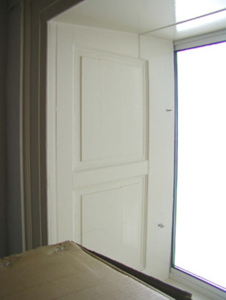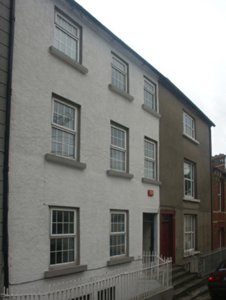Survey Data
Reg No
15502041
Rating
Regional
Categories of Special Interest
Architectural, Artistic
Original Use
House
In Use As
Office
Date
1700 - 1840
Coordinates
304732, 122135
Date Recorded
07/07/2005
Date Updated
--/--/--
Description
Terraced single-bay three-storey over part raised basement townhouse, extant 1840, on a rectangular plan. Renovated, ----, to accommodate alternative use. Pitched slate roof with clay ridge tiles, and replacement uPVC rainwater goods on rendered red brick header bond stepped eaves. Rendered walls. Square-headed door opening (south) approached by flight of four cut-granite steps supporting wrought iron bootscraper, carved timber surround on cut-granite padstones framing timber panelled door having overlight. Paired square-headed window openings (basement) with cut-granite sills, and concealed dressings framing six-over-six timber sash windows having part exposed sash boxes. Square-headed central window openings originally in tripartite arrangement with cut-granite sills, and concealed dressings framing replacement uPVC casement windows replacing six-over-six or six-over-three (top floor) timber sash windows having two-over-two or two-over-one (top floor) sidelights. Interior including (ground floor): hall retaining timber surrounds to door openings framing timber panelled doors, staircase on a dog leg plan with turned timber "spindle" balusters supporting carved timber banister terminating in paired turned timber newels, and timber surrounds to door openings to landings framing timber panelled doors; and timber surrounds to door openings to remainder framing timber panelled doors with timber surrounds to window openings framing timber panelled reveals or shutters. Street fronted with wrought iron railings to perimeter.
Appraisal
A townhouse representing an integral component of the domestic built heritage of Wexford with the architectural value of the composition suggested by such attributes as the compact rectilinear plan form; the diminishing in scale of the centralised openings on each floor producing a graduated visual impression with those openings originally showing Wyatt-style tripartite glazing patterns installed by Philip Redmond or Joseph Harvey (Kehoe 1988, 15); and the high pitched roofline. Having been well maintained, the elementary form and massing survive intact together with quantities of the original fabric, both to the exterior and to the interior: however, the introduction of replacement fittings to most of the openings has not had a beneficial impact on the character or integrity of a townhouse making a pleasing visual statement in George's Street Lower.

